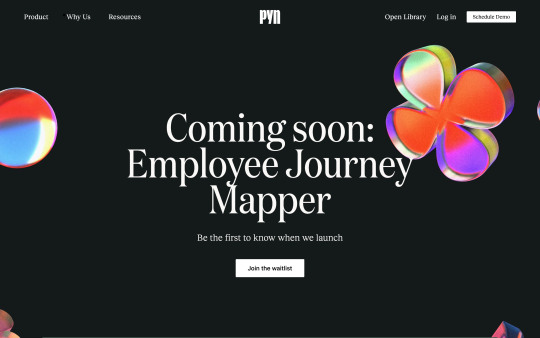#Automations
Explore tagged Tumblr posts
Text
LIST: iOS SHORTCUTS
• Spotify to MP3 | "Download Spotify tracks to MP3." • All Media Downloader | "This shortcut helps you download content from social media apps." • Web Services | "Customise the internet for you." • Better GIF Maker | "Convert videos and live photos to GIFs at highest quality using ffmpeg" • Water Eject | "Powerful water ejection system." • Paywall and Cookie Bypass | "Bypass website paywalls and cookies." • iUtilities | "The only shortcut you’ll need" • Reverse Image Search | "Search by image instead of keywords" • Google Translate | "Quickly translate using the Google Translate API" • iTweak Final Version | "A Jailbreak Alternative With Multiple Features!"
...WHAT ARE SHORTCUTS?
for those unaware: the pre-installed Shortcuts app on iOS/macOS/iPadOS can potentially be a life-changing application in regards to digital productivity.
it's utilized as a hub for your collection of shortcuts and automations. shortcuts allow for just a single click—which many times is conveniently incorporated onto your "share" sheet option panel—to execute one or multiple actions; automations are chosen commands that run at specific/relative times of day without prompt.
people tend to overlook the Shortcuts app due to its available "gallery" of shortcuts being rather limited... with the only other option provided being to build these desired actions yourself, which requires the skill of digital coding. however! that's where RoutineHub comes in: it's a website allowing users to share their own complex shortcuts, free of charge, and has a large selection to choose from.
RoutineHub: Shortcuts {by Popularity}
#smart technology#digital productivity#life hacks#productivity#shortcuts#smart living#automations#iOS#macOS#iPadOS#technology#routinehub#g#link#text#ref
150 notes
·
View notes
Text

In the fast-paced world of #finance, #communication needs to be seamless, secure, and efficient. Our #businessphonesolutions are designed to meet the unique demands of the finance industry, ensuring your clients and staff stay connected with confidence. Visit: https://www.vitelglobal.com/
7 notes
·
View notes
Text
I'm doing my part! (I didn't have a part in this scene)
#helldivers2#helldivers#maveloncreek#gantzthedemon#superearth#automations#terminids#streaming#stream#twitch#fyp#gamingcontent
13 notes
·
View notes
Text
Now that bots are defeated, the threat of advanced civilizations are quelled and this bug situation seems like it's in the bag, I think I can take a break from this campaign and just go back to vibing. Lemme just look at the map one more time to really revel in-

#oh no#no nonononononono#helldivers#helldivers 2#we knew the script but still played the fool#sweet democracy#there goes my spring break#automations#the robots are back and its a nightmare#that map really sent me#good for them
16 notes
·
View notes
Text

2 notes
·
View notes
Photo

https://www.pynhq.com/
#Pyn#product#Automated Onboarding#Manager Enablement#Automations#employee journey mapper#typography#type#typeface#font#Reckless Neue#Domaine Display Narrow#Founders Grotesk#Beausite Classic#2023#Week 24#website#web design#inspire#inspiration#happywebdesign
5 notes
·
View notes
Text
Automation Building Systems in Healthcare - Messung BACD
Healthcare, being a strictly safety-regulated, hygiene-oriented, and efficiency-conscious service operation, requires highly specific control of the environment to achieve these standards. It demands an effective automation building system (ABS) to integrate HVAC, lighting, and access control into one central Building Automation and Control System (BACS).
Messung specializes in delivering tailored ABS solutions for healthcare facilities, ensuring compliance with strict healthcare norms such as ASHRAE 170 (Ventilation of Health Care Facilities). Beyond energy efficiency, Messung's systems provide optimal IAQ, temperature, and humidity, creating a controlled and safe environment. Their advanced solutions ensure comfort and peace of mind for patients and staff, setting a new standard in healthcare automation.
What is an Automation Building System?
An automation building system is a centralized framework that combines hardware, software, and communications protocols to run buildings automatically and optimally. It is engineered to manage critical systems, including HVAC (heating, ventilation, and air conditioning), lighting, security, and energy management systems.
How Do Automation Building Systems Work in Healthcare?
These ABS systems offer a structured method for controlling and handling the critical environmental parameters of the healthcare premises. Therefore, it involves three stages.
Environmental Data Acquisition
Sensors continuously monitor parameters such as airflow, temperature, humidity, pressure and occupancy. In sensitive zones such as operating rooms or isolation wards, high-precision sensors ensure that real-time data acquisition occurs to make critical decisions.
Centralized Processing
It analyzes the sensor data, using complex algorithms in real-time, to assess the conditions. The systems also ensure compliance with other parameters such as air exchange rates, pressure differential, and thermal comfort that are required in healthcare environments.
Automated Adjustments
The actuators comprise dampers, valves, and AHUs that BACS controls in changing HVAC settings, lighting, or filtration systems. Closed-loop processes are the best for optimal performance, high health standards, and enhanced energy efficiency.
ABS ensures seamless communication between components via open communication protocols like BACnet, Modbus, and KNX, providing flexibility for future upgrades and integration.
Key Benefits of Automation Building Systems in Healthcare
The technical and operational benefits of implementing an ABS in healthcare institutions are as follows:
Energy Management
HVAC systems account for a large percentage of energy consumption in healthcare settings. ABS optimizes ventilation rates, thereby saving energy but not compromising performance.
Automated scheduling and adaptive controls reduce wastage by automatically adjusting HVAC operations during non-peak hours. The integration with renewable energy systems further improves energy efficiency and sustainability.
Accurate Environmental Control
The most critical zones, such as operating theaters, isolation wards, and ICUs, need controlled temperature, humidity, and air quality. ABS ensures compliance with ASHRAE and CDC guidelines by having precise control over its environment.
Besides, adaptive algorithms adjust the conditions depending on the occupancy and activity.
Operational Efficiency
Automated diagnostics and system monitoring reduce the need for manual interventions, allowing maintenance teams to focus on high-priority tasks.
Also, real-time alerts and predictive maintenance features reduce equipment downtime, thereby raising overall reliability.
The Role of Automation Building Systems in Infection Control
Infection control is the cornerstone of operations in healthcare, and automation building systems play a critical role in minimizing the spread of pathogens in healthcare facilities.
Air Flow and Pressure Control Zones
ABS maintains positive pressure in areas such as operation rooms and maintains negative pressure in isolation wards to limit the flow of pathogens. Advanced air handling systems ensure directional airflow as established by healthcare standards.
Humidity Control
30-60% optimal humidity can be maintained with minimum microbial growth and static discharge, which could influence highly sensitive medical equipment.
Air Filtration and Exchange
ABS can integrate HEPA filtration systems, making sure that there are ACHs in the needed areas. Automated ventilation ensures that fresh air circulates, reducing contaminant buildup.
Automatic Alerts and Notifications
Sensors monitor critical parameters continuously, detecting deviations that cause alarms. Facility managers can respond quickly to restore compliant conditions, ensuring uninterrupted patient care.
Messung’s ABS Solutions for Healthcare: Key Features
Messung offers end-to-end solutions for building automation, specializing in project management and customized services tailored to the healthcare industry. So, here's how Messung supports healthcare organizations:
Comprehensive Project Management
Messung oversees every aspect of building automation projects, from initial consultation and planning to design, execution, and commissioning through the network of highly trained SI Partners.
Tailored Solutions
Messung provides customized automation solutions based on the unique needs of healthcare facilities. Their solutions include integrating HVAC, lighting, access control, and environmental monitoring systems into a unified Building Automation and Control System (BACS).
State-of-the-Art Technologies
Messung employs advanced technologies such as IoT, SCADA, and data analytics to enhance system functionality, enabling better decision-making, energy efficiency, and compliance with healthcare standards.
Maintenance and Support
Messung offers robust after-sales services, including preventive maintenance, upgrades, and troubleshooting.
Regulatory Expertise
Messung’s ABS solutions are fully compliant with stringent healthcare regulations like ASHRAE 170, CDC guidelines, and LEED standards.
Conclusion
Automation building systems (ABS) are the backbone of modern healthcare infrastructure, seamlessly integrating sophisticated technology with precise control to achieve optimal building operations. From infection control and energy efficiency to improved patient outcomes and enhanced staff productivity, ABS systems manage it all with unparalleled efficiency.
With a proven track record and focus on innovation, Messung ensures that its clients receive high-quality ABS solutions to build smarter, more efficient healthcare infrastructures.
0 notes
Text
How Much Does a 5x10 CNC Plasma Table Cost
A 5x10 CNC plasma table is a powerful tool that can revolutionize your metalworking projects. However, the cost of such a machine can vary significantly depending on several factors.

Factors Affecting the Cost of a 5x10 CNC Plasma Table Brand and Model:
Reputable brands like Torchmate, Hypertherm, and Langmuire Systems often command higher prices but offer superior quality, performance, and customer support.
Newer models with advanced features, such as automatic torch height control and water cooling, may also cost more.
Table Size and Cutting Area:
A 5x10 table is a popular size, but larger tables or custom sizes can significantly increase the cost.
Plasma Cutter Power: The power of the plasma cutter determines the thickness of the metal it can cut. Higher-powered cutters are more expensive but offer greater versatility.
Control System: The complexity and sophistication of the control system can impact the price. Advanced control systems with features like CAD integration and automatic nesting can be more expensive.
Additional Features: Optional features like dust collection systems, water tables, and rotary tables can increase the overall cost.
DIY vs. Commercial: Building a DIY 5x10 CNC plasma table can be a more cost-effective option, but it requires significant time, effort, and technical expertise.
Purchasing a commercial-grade machine is generally more expensive upfront but often offers better performance, reliability, and support.
Cost Breakdown: Budget-Friendly Options: You can find basic 5x10 CNC plasma table kits for around $5,000 to $7,000. These kits typically include the frame, rails, motors, and basic electronics. However, you may need to source additional components like the plasma cutter, control system, and software.
Mid-Range Options: Mid-range 5x10 CNC plasma tables, which often come with a complete package including the plasma cutter, control system, and software, can cost between $7,000 and $12,000.
High-End Options: High-end 5x10 CNC plasma tables with advanced features, such as automatic torch height control, water cooling, and high-powered plasma cutters, can cost upwards of $15,000.
Tips for Buying a 5x10 CNC Plasma Table:
Set a Budget: Determine how much you're willing to spend and stick to it.
Research Different Brands: Compare features, prices, and customer reviews.
Consider Your Needs: Think about the types of metal you'll be cutting and the complexity of your projects.
Look for Deals and Discounts: Keep an eye out for sales and promotions.
Factor in Maintenance Costs: Consider the cost of replacement parts and regular maintenance.
Seek Expert Advice: Consult with experienced metalworkers or CNC enthusiasts for advice on choosing the right machine.
Consider Used Equipment: Used 5x10 CNC plasma tables can be a more affordable option, but it's important to carefully inspect the machine for wear and tear.
By carefully considering these factors and following these tips, you can find a 5x10 CNC plasma table that fits your budget and meets your specific needs.
0 notes
Text
AI for Business Owners: A Beginner’s Guide to Getting Started with Automation.
In today’s fast-paced business world, staying ahead means more than just working harder—it’s about working smarter. For business owners, automation is the key to streamlining operations, reducing costs, and improving efficiency. But where do you start, and how do you know which processes to automate? This guide will walk you through the fundamentals of AI automation for your business. We’ll explore what AI is, how it can help, and the best ways to get started, no matter the size or type of your business.
Whether you're running a small e-commerce store, a real estate agency, or a local service business, AI automation has the potential to revolutionize the way you work. By the end of this guide, you’ll have a clearer understanding of how AI fits into your business and actionable steps you can take to implement automation.

What is AI Automation?
AI automation refers to using artificial intelligence technologies to perform tasks that typically require human effort. These tasks range from responding to customer inquiries to analyzing data, managing inventory, and even personalizing marketing campaigns. Unlike traditional automation, which follows pre-programmed rules, AI automation learns and adapts, making it far more flexible and capable of handling complex tasks.
For business owners, this means you can automate tasks that require decision-making, data analysis, and even customer interactions—allowing your team to focus on higher-value activities.
Why Should Businesses Consider AI Automation?
1.Increase Efficiency and Productivity
AI automation allows you to automate repetitive, time-consuming tasks, freeing up employees to focus on core business functions. For example, AI-powered chatbots can handle customer queries 24/7, while AI tools can process large datasets quickly, helping you make faster business decisions.

2.Cost Savings
Automation reduces the need for manual labor, lowering operational costs. Tasks that would normally require a team of people—like customer service, order processing, or inventory management—can be handled by AI systems with little human intervention, saving both time and money.
3.Scalability
As your business grows, so do your operational demands. AI systems can scale with you. For example, an AI-powered chatbot can handle hundreds of customer inquiries simultaneously, while automated marketing tools can manage larger email lists without requiring additional staff.
4.Enhanced Customer Experience
AI-driven systems allow for personalized customer interactions. By analyzing data such as purchase history or browsing behavior, AI can tailor recommendations, improving customer satisfaction and increasing sales.
5.Key Areas to Automate in Your Business
1. Customer Service
AI-powered chatbots and virtual assistants can handle routine customer queries, provide product recommendations, and resolve simple issues around the clock. These systems can understand customer intent using natural language processing (NLP) and learn over time, improving responses and efficiency.

- Example: Implement a chatbot on your website or social media platforms to answer common questions, reducing the burden on your customer service team.
2. Marketing Automation
AI can analyze customer behavior, segment your audience, and personalize marketing messages. Tools like AI-driven email campaigns or social media schedulers allow you to target the right customers at the right time with the right message.

- Example: Use AI-powered tools like Mailchimp or HubSpot to automate your email marketing. These tools can recommend the best time to send emails, personalize the content, and even suggest what type of subject line will get the most engagement.
3.Data Analysis and Reporting
Analyzing large amounts of business data manually is time-consuming and prone to errors. AI systems can process and analyze this data in real-time, providing insights to help you make data-driven decision faster.

- Example: AI tools like Tableau or Google Analytics leverage machine learning to provide deeper insights into your business performance, from sales trends to customer behavior patterns.
4. Inventory and Supply Chain Management
AI can optimize your inventory levels by predicting demand, managing supply orders, and reducing waste. For e-commerce businesses, AI can automate the entire supply chain, ensuring you have the right stock levels based on real-time demand.

- Example: Use AI tools like ClearSpider to automate your inventory management process, reducing manual tracking and stockout situations.
5. HR and Recruiting.
AI can streamline the recruitment process by scanning resumes, scheduling interviews, and even conducting initial candidate screenings. AI tools can match candidates to job requirements more accurately than human recruiters, speeding up the hiring process.
- Example: Tools like Lever or SmartRecruiters use AI to screen resumes and suggest candidates who are the best fit for your open roles.
How to Implement AI Automation in Your Business
1.Identify the Right Tasks to Automate
Start by identifying repetitive, time-consuming tasks in your business that don’t require high-level decision-making. These are prime candidates for automation. For example, handling customer inquiries, managing inventory, or scheduling appointments can be automated with the right tools.
2.Choose the Right AI Tools
Once you’ve identified what to automate, the next step is choosing the right tools. Depending on your industry and needs, there are a wide variety of AI automation tools available. Consider tools like:
- Zapier- for automating workflows between apps.
- HubSpot- for automating customer relationship management (CRM) and marketing.
- Drift or Tidio for AI-powered chatbots and customer service automation.
3.Train Your Team
Introducing AI automation doesn’t mean replacing your team—it’s about augmenting their capabilities. Train your employees to work alongside AI tools so they can focus on more strategic, creative tasks. This helps create a seamless transition and ensures everyone is on board.
4. Monitor and Adjust
AI systems are not set-and-forget solutions. Regularly monitor the performance of your automation tools and make adjustments as necessary. Over time, the AI will adapt and improve, but it still requires oversight to ensure it’s aligned with your business goals.
Common Challenges and How to Overcome Them
1. Cost of Implementation
While AI can save money in the long run, the initial cost of implementing automation tools can be a barrier for small businesses. Start small with affordable tools and gradually scale up as you see the benefits.
2. Resistance from Employees
Employees may feel threatened by automation, worrying that it will replace their jobs. Make it clear that AI is there to support and enhance their work, not replace it. Encourage them to embrace the technology as a tool that helps them work more efficiently.
3. Data Privacy and Security
With AI handling sensitive data, it’s important to ensure that you have strong data privacy and security measures in place. Work with AI vendors who are compliant with data protection regulations like GDPR to safeguard your business and customer data.
Conclusion and Call to Action
AI automation is no longer a futuristic concept—it’s a present-day solution that can help businesses of all sizes streamline operations, reduce costs, and improve customer experiences. By starting with small, manageable tasks and gradually expanding your use of AI tools, you can unlock significant time savings and focus on growing your business.
Ready to get started? At Astranova AI, we specialize in helping businesses like yours leverage AI automation to its full potential. Contact us today for a **free AI audit**, where we’ll assess your business and recommend the best AI tools to automate your key processes. Let’s take your business to the next level with AI.
Kelvin Joshua
ASTRANOVA AI
Instagram- ai_astranova CEO
kelvinjoshua006Email- [email protected]
0 notes
Text
IBM Watsonx Assistant For Z V2’s Document Ingestion Feature
IBM Watsonx Assistant for Z
For a more customized experience, clients can now choose to have IBM Watsonx Assistant for Z V2 ingest their enterprise documents.
A generative AI helper called IBM Watsonx Assistant for Z was introduced earlier this year at Think 2024. This AI assistant transforms how your Z users interact with and use the mainframe by combining conversational artificial intelligence (AI) and IT automation in a novel way. By allowing specialists to formalize their Z expertise, it helps businesses accelerate knowledge transfer, improve productivity, autonomy, and confidence for all Z users, and lessen the learning curve for early-tenure professionals.
Building on this momentum, IBM is announce today the addition of new features and improvements to IBM Watsonx Assistant for Z. These include:
Integrate your own company documents to facilitate the search for solutions related to internal software and procedures.
Time to value is accelerated by prebuilt skills (automations) offered for typical IBM z/OS jobs.
Simplified architecture to reduce costs and facilitate implementation.
Consume your own business records
Every organization has its own workflows, apps, technology, and processes that make it function differently. Over time, many of these procedures have been improved, yet certain specialists are still routinely interrupted to answer simple inquiries.
You can now easily personalize the Z RAG by ingesting your own best practices and documentation with IBM Watsonx Assistant for Z. Your Z users will have more autonomy when you personalize your Z RAG because they will be able to receive answers that are carefully chosen to fit the internal knowledge, procedures, and environment of your company.
Using a command-line interface (CLI), builders may import text, HTML, PDF, DOCX, and other proprietary and third-party documentation at scale into retrieval augmented generation (RAG). There’s no need to worry about your private content being compromised because the RAG is located on-premises and protected by a firewall
What is Watsonx Assistant for Z’s RAG and why is it relevant?
A Z domain-specific RAG and a chat-focused granite.13b.labrador model are utilized by IBM Watsonx Assistant for Z, which may be improved using your company data. The large language model (LLM) and RAG combine to provide accurate and contextually rich answers to complex queries. This reduces the likelihood of hallucinations for your internal applications, processes, and procedures as well as for IBM Z products. The answers also include references to sources.
Built-in abilities for a quicker time to value
For common z/OS tasks, organizations can use prebuilt skills that are accessible. This means that, without specialist knowledge, you may quickly combine automations like displaying all subsystems, determining when a program temporary fix (PTF) was installed, or confirming the version level of a product that is now operating on a system into an AI assistant to make it easier for your Z users to use them.
Additionally, your IBM Z professionals can accelerate time to value by using prebuilt skills to construct sophisticated automations and skill flows for specific use cases more quickly.
Streamlined architecture for easier deployment and more economical use
IBM Watsonx Discovery, which was required in order to provide elastic search, is no longer mandatory for organizations. Alternatively, they can utilize the integrated OpenSearch feature, which combines semantic and keyword searches to provide access to the Z RAG. This update streamlines the deployment process and greatly reduces the cost of owning IBM Watsonx Assistant for Z in addition to improving response quality.
Use IBM Watsonx Assistant for Z to get started
By encoding information into a reliable set of automations, IBM Watsonx Assistant for Z streamlines the execution of repetitive operations and provides your Z users with accurate and current answers to their Z questions.
Read more on govindhtech.com
#IBM#WatsonxAssistant#ZV2Document#IBMZ#IngestionFeature#artificialintelligence#AI#RAG#WatsonxAssistantZ#retrievalaugmentedgeneration#IBMWatsonx#automations#technology#technews#news#govindhtech
0 notes
Photo

Winning #salesfunnels! Happy #funnelfriday! Read this testimonial from our Clutch page: Thanks to effective marketing funnels and automations, my website is generating leads and converting into paying business. Job well done! 🎉
#salesfunnels#funnelfriday#MarketingFunnels#LeadGeneration#Automations#SuccessStories#HappyCustomers
0 notes
Text

I simply don't think that's true eBooks.com but thank you anyway
#i love getting automated emails from book stores#about authors who have been dead for decades ajdbfkdjdj#i had to read nietzsche for my existentialism class. god what a pretentious dude
81K notes
·
View notes
Text
Goofy ahh moment 🗿😭
9 notes
·
View notes
Text
Ticket Sorter Market Market Overview: Exploring Industry Expansion by 2032
New Research Report on “Ticket Sorter Market Market” provide insightful data on the main market segments, dynamics, growth potentials and future prospects of industry. The study covers complete analysis on changing market trends for industry. The report shows the year-on-year growth of each segment and touches upon the different factors that are likely to impact the growth of each market segment. Each segment has analyzed completely on the basis of its production, consumption as well as revenue. And also offers Ticket Sorter Market market size and share of each separate segment in the industry.
Get a Sample Copy of the Report at - https://www.proficientmarketinsights.com/enquiry/request-sample/1465
The global Ticket Sorter Market size was USD 5858.3 million in 2024 and the market is projected to touch USD 7933.4 million by 2031, exhibiting a CAGR of 4.0% during the forecast period.
Top Key Players in the Ticket Sorter Market Market:
Giesecke & Devrient: (Germany)
Glory Global Solutions: (UK)
Laurel: (Japan)
De La Rue: (UK)
Toshiba: (Japan)
Kisan: (South Korea)
Cummins-Allison: (USA)
Request Sample for Covid-19 Impact Analysis - https://www.proficientmarketinsights.com/enquiry/request-covid19/1465
The Ticket Sorter Market market research report presents a comprehensive assessment of the market and contains thoughtful insights, facts, historical data, and statistically supported and industry-validated market data. It also contains projections using a suitable set of assumptions and methodologies. The research report provides analysis and information according to market segments such as geographies, application, and industry.
Market split by Type, can be divided into:
Small Size Note Sorter
Medium Size Note Sorter
Large Size Note Sorter
Market split by Application, can be divided into:
BFSI
Retail
Others
Report presents a detailed picture of the market by the way of study, synthesis, and summation of data from multiple sources by an analysis of key parameters. Our Ticket Sorter Market market covers the following areas:
Ticket Sorter Market market sizing
Ticket Sorter Market market forecast
Ticket Sorter Market market industry analysis
Inquire or Share Your Questions If Any Before the Purchasing This Report -https://www.proficientmarketinsights.com/enquiry/pre-order-enquiry/1465
What Global Ticket Sorter Market Market Report Offers?
Provides strategic profiling of key players in the Ticket Sorter Market market.
Drawing a competitive landscape for the world Ticket Sorter Market industry.
Describes insights about factors affecting the Ticket Sorter Market market growth.
Analyze the Ticket Sorter Market industry share based on various factors- price analysis, supply chain analysis etc.
Extensive analysis of the industry structure along with Ticket Sorter Market market forecast 2020-2024.
Granular Analysis with respect to the current Ticket Sorter Market industry size and future perspective.
Regions Covered in Ticket Sorter Market Market Report:
North America (United States, Canada and Mexico)
Europe (Germany, UK, France, Italy, Russia and Turkey etc.)
Asia-Pacific (China, Japan, Korea, India, Australia, Indonesia, Thailand, Philippines, Malaysia and Vietnam)
South America (Brazil etc.)
Middle East and Africa (Egypt and GCC Countries)
Purchase this Report (Price 2900 USD for a Single-User License) - https://www.proficientmarketinsights.com/purchase/1465
#MarketInsights#TechnologyTrends#IndustryAnalysis#ConsumerBehaviour#DataDriven#FinancialAnalysis#BusinessIntelligence#HealthcareIndustry#MarketTrends#EmergingMarkets#GlobalReports#SustainabilityReports#Insights4Sale#EconomicForecast#ResearchReports#MarketSegmentation#MarketAnalysis#CompetitiveAnalysis#Healthcare#AerospaceAndDefence#Agriculture#Automations#ChemicalsAndAdvancedMaterials#FoodAndBeverages#InformationAndCommunicationTechnology#OilAndGas#PowerAndEnergy
1 note
·
View note
Text
2 notes
·
View notes